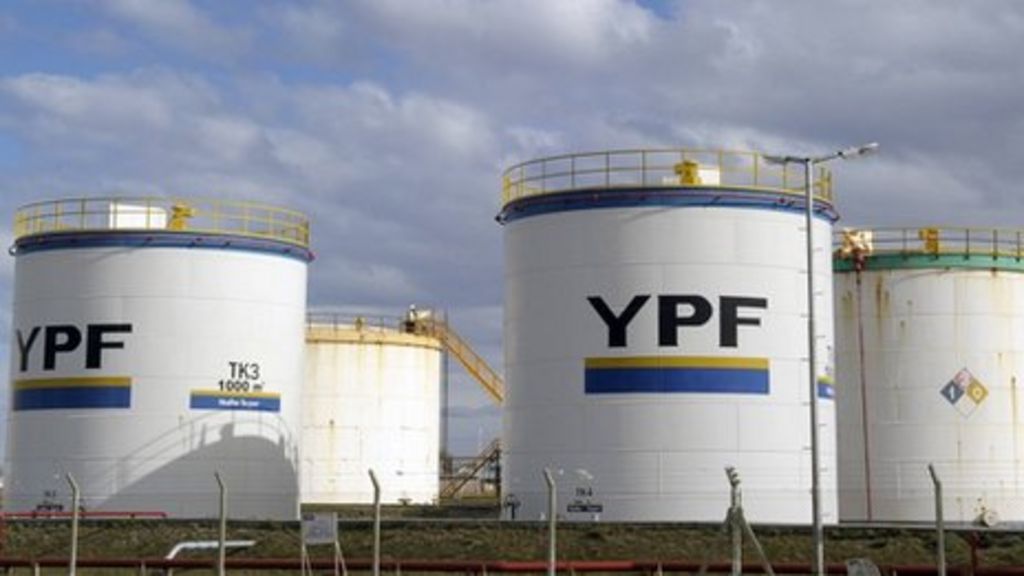(S&P Global Platts) YPF, the biggest oil and natural gas producer in Argentina, is doing preliminary studies to prepare for building LNG export capacity as gas production grows in the giant Vaca Muerta shale play and projects get underway to increase pipeline capacity, CFO Alejandro Lew said Dec. 10.
“We are doing the technical studies to be prepared,” he said at an Americas Society and Council of the Americas energy conference.
Lew said he is uncertain when YPF, which produces 28% of Argentina’s 133 million cu m/d of gas, could start such a multibillion-dollar project, given that the country’s financial crisis, now in its fourth year, is limiting access to capital at affordable rates.
“With the current macroeconomic environment in Argentina, any multibillion-dollar and multiyear project such as an LNG terminal should probably take a few years to come,” he said. “But the opportunity is there.”
The project would build on YPF’s first foray into exporting LNG with a floating liquefaction terminal in 2019 and 2020, when it targeted sales to Asia. The shipments were made out of surplus production during the warmer months of October to April, when heating demand declines from peaks of 180 million cu m/d to as low as 100 million cu m/d. The shipments and the floating terminal, hired from Texas-based Excelerate Energy, were suspended in 2020 as gas output dwindled from a most recent high of 144.4 million cu m/d in July 2019 to a most recent low of 114.2 million cu m/d in April this year in response to low gas prices and a decline in demand during a lockdown for the COVID-19 pandemic between March and November of last year.
Production and prices have since started to recover, encouraging YPF to revive plans for exporting LNG.
The main driver for eventual exports is Vaca Muerta, a huge shale play in northern Patagonia with 300 Tcf of gas resources.
“In Argentina we have been blessed with Vaca Muerta,” Lew said. “It is a tremendous resource of shale gas and also of oil.”
The play came into development in 2012, but the pace slowed last year during the lockdown until a price incentives program kicked in early this year. The government program has boosted average gas prices to $3.50/MMBtu, up from less than $2.50/MMBtu in 2020.
“The market was lacking the right price signals for the natural gas resources to be developed,” Lew said, adding that now with higher prices production has recovered.
Argentina produced 133 million cu m/d in September and 127 million cu m/d in October, according to Energy Secretariat data.
“The market has increased production by about 30% in less than three months,” Lew said. “This has demonstrated the ability of Vaca Muerta gas to be efficiently put to work with an average price of $3.50/MMBtu.”
Production is still at less than average annual demand of 120 million cu m/d and peak winter (June to August) demand of up to 180 million cu m/d, meaning that until it reaches those levels the country will continue to import gas from Bolivia all year and off the global market as LNG in winter.
Pipeline capacity needed
Argentina has a benefit as a potential exporter, given that its period of low demand is when demand is highest in the Northern Hemisphere, Lew said.
Yet to cut exports and begin to increase exports, production still must grow out of Vaca Muerta and midstream capacity be built.
“The problem is that right now we have some bottlenecks in terms of natural gas pipelines to be able to further increase production out of Vaca Muerta to supply gas during wintertime,” Lew said.
The Argentinian government hopes to change that by the winter of 2023 with a $3.5 billion project to increase gas pipeline capacity out of Vaca Muerta by 44 million cu m/d, including with a new pipeline. Of the new capacity, 24 million cu m/d is come on line next year, according to the government.
The pipeline project is boosting expectations that producers can eventual harness Vaca Muerta for exporting gas globally.
“We do have the resources and we do have the opportunity down the road to potentially export LNG,” Lew said.



